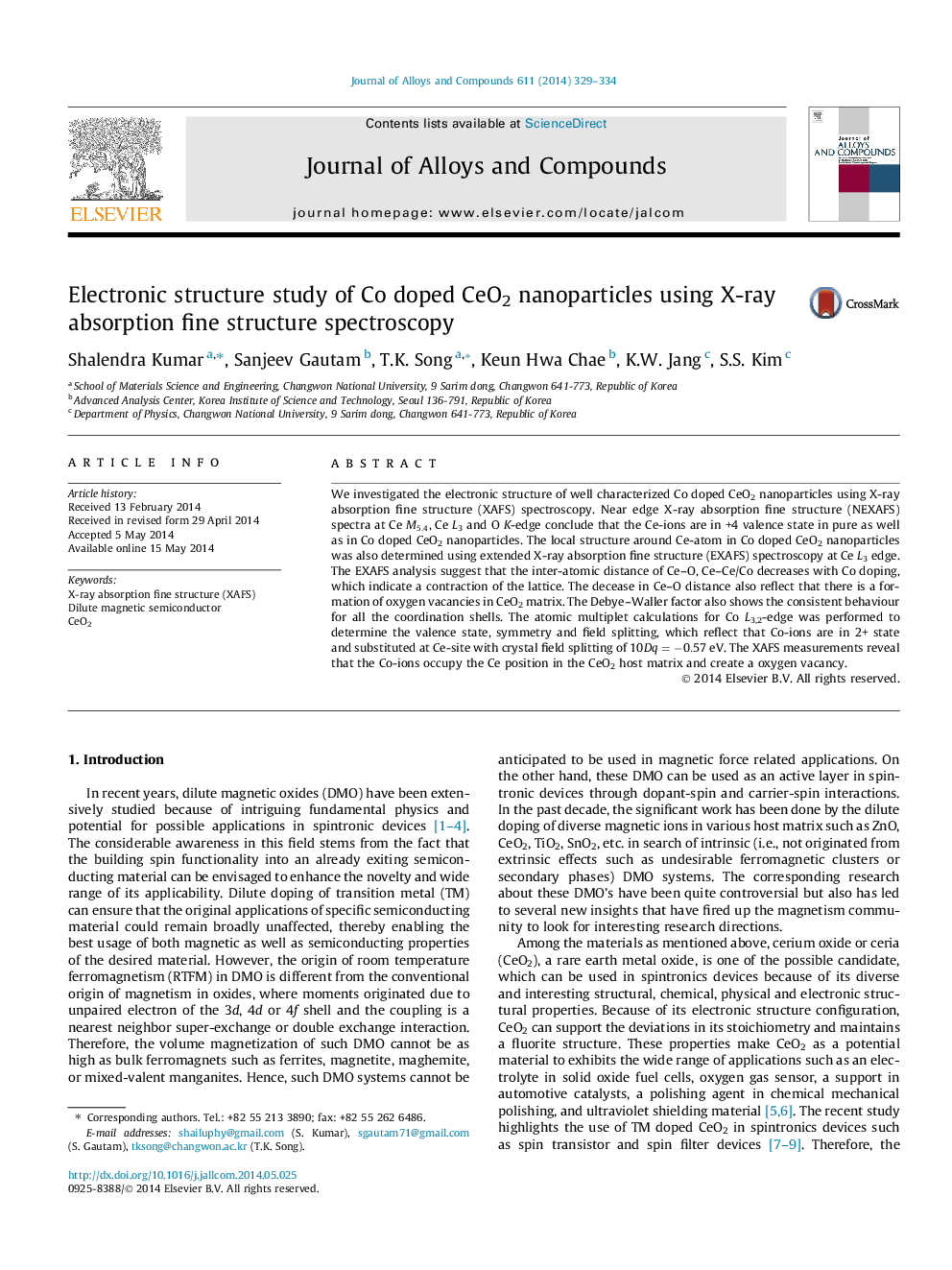| Article ID | Journal | Published Year | Pages | File Type |
|---|---|---|---|---|
| 1610483 | Journal of Alloys and Compounds | 2014 | 6 Pages |
•The electronic structural of Co–CeO2 nanoparticles is investigated using XAFS.•Ce M5,4M5,4, Ce L3 and O K edge NEXAFS reveal that the Ce-ions are in +4 valence state.•The NEXAFS spectrum performed at Co L3,2-edge confirms Co-ion in 2+ state.•The EXAFS analysis also show that Co ions are occupying Ce position in doped CeO2.•The distances between Ce–O and Ce–Ce/Co in all shells decreases with Co doping.
We investigated the electronic structure of well characterized Co doped CeO2 nanoparticles using X-ray absorption fine structure (XAFS) spectroscopy. Near edge X-ray absorption fine structure (NEXAFS) spectra at Ce M5,4M5,4, Ce L3 and O K-edge conclude that the Ce-ions are in +4 valence state in pure as well as in Co doped CeO2 nanoparticles. The local structure around Ce-atom in Co doped CeO2 nanoparticles was also determined using extended X-ray absorption fine structure (EXAFS) spectroscopy at Ce L3 edge. The EXAFS analysis suggest that the inter-atomic distance of Ce–O, Ce–Ce/Co decreases with Co doping, which indicate a contraction of the lattice. The decease in Ce–O distance also reflect that there is a formation of oxygen vacancies in CeO2 matrix. The Debye–Waller factor also shows the consistent behaviour for all the coordination shells. The atomic multiplet calculations for Co L3,2-edge was performed to determine the valence state, symmetry and field splitting, which reflect that Co-ions are in 2+ state and substituted at Ce-site with crystal field splitting of 10Dq=-0.57eV. The XAFS measurements reveal that the Co-ions occupy the Ce position in the CeO2 host matrix and create a oxygen vacancy.
Graphical AbstractFigure optionsDownload full-size imageDownload as PowerPoint slide
